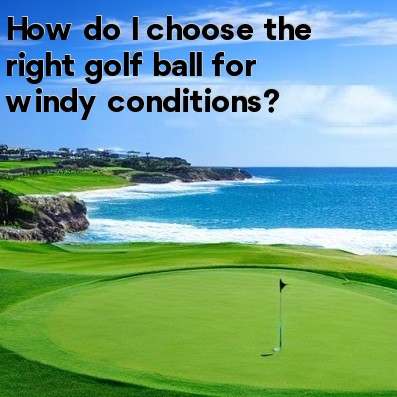
Choosing the Right Golf Ball for Windy Conditions
Golfing in windy conditions can present a challenge for even the most experienced golfers. One important consideration in such conditions is choosing the right golf ball. The right ball can help you maintain control and accuracy, allowing you to navigate the wind with greater ease. Here are some key factors to consider when selecting a golf ball for playing in windy conditions:
- Ball Compression: Golf balls come in different compression levels, which determine how soft or firm the ball is. In windy conditions, it is recommended to choose a low-to-mid compression ball. These balls tend to offer better control and a lower ball flight, enabling you to combat the effects of the wind.
- Ball Spin: The amount of spin a golf ball produces can also impact its performance in the wind. In windy conditions, it is advisable to opt for a ball with low spin. Low-spin golf balls generate less backspin, which can help reduce the impact of crosswinds and keep your shots more accurate.
- Ball Dimples: The dimples on a golf ball play a crucial role in its aerodynamics. Generally, golf balls with more dimples tend to perform better in the wind. More dimples create more turbulence around the ball, allowing it to stay stable and have a consistent flight path even in windy conditions.
- Ball Cover: The cover material of a golf ball can also impact its performance in the wind. Golf balls with urethane covers tend to be more wind-resistant. Urethane covers provide better control and offer a softer feel, which can be advantageous in windy conditions.
- Ball Weight: The weight of the golf ball can affect its performance in windy conditions. In general, heavier golf balls tend to be less affected by the wind. Consider opting for a slightly heavier ball to help counteract the wind's influence.
- Ball Compression: Golf balls come in different compression levels, which determine how soft or firm the ball is. In windy conditions, it is recommended to choose a low-to-mid compression ball. These balls tend to offer better control and a lower ball flight, enabling you to combat the effects of the wind.
It is important to note that finding the right golf ball for windy conditions may require some experimentation and personal preference. Each golfer has a unique swing and playing style, so what works well for one person may not work as effectively for another.
When practicing or playing in windy conditions, it is advisable to test out different golf balls to see which one suits your game the best. Pay attention to how the ball reacts to the wind, how it feels when striking it, and how much control you have over your shots.
Remember that in addition to selecting the right ball, there are other strategies you can employ to enhance your performance in windy conditions. Adjusting your stance, altering your shot trajectory, and taking the wind into account when selecting your club can also make a significant difference.
In conclusion, choosing the right golf ball for windy conditions is a critical aspect of maintaining control and accuracy on the course. Factors such as ball compression, spin, dimples, cover material, and weight should be considered when making your selection. Experimentation and personal preference play a crucial role, so be sure to test out different options to find the ball that works best for you. Combine your ball selection with appropriate shot adjustments and strategies to improve your overall performance in windy conditions.





